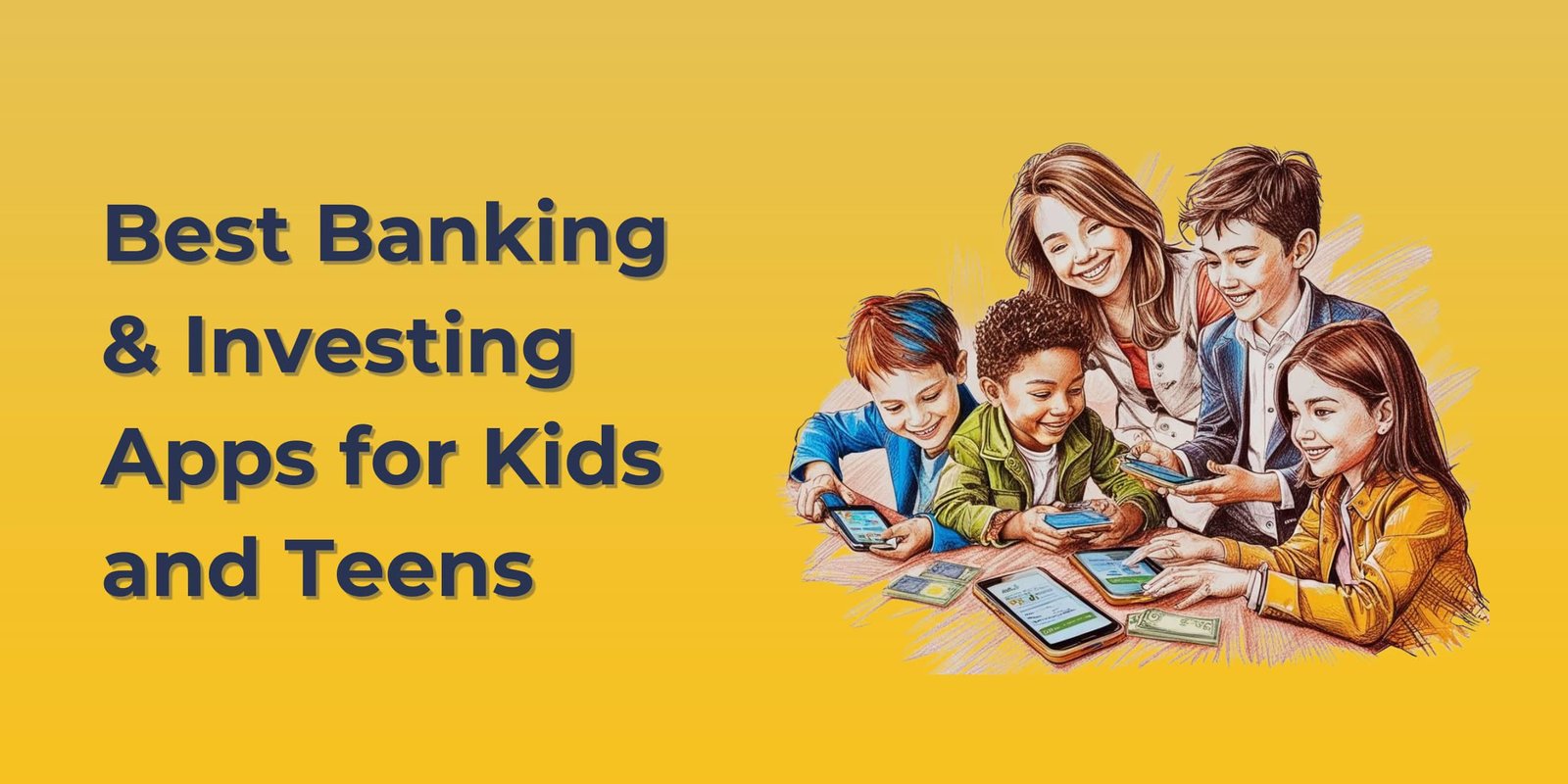- Home
- Money Management
- I’m a CFP® and Parent — M ...

This content is for educational purposes only and does not constitute financial advisory, advisory or brokerage services. We may earn compensation for some links on this page. Learn more.
Over the past two years, my oldest daughter, who is now in seventh grade, began managing her own money.
To support this, I opened a no-fee Capital One MONEY account. This account comes with a debit card and allows you to separate spending and savings (similar to a sinking fund). Instant transfers are convenient because I already bank with Capital One.
While it has worked well for the expense, something is missing. My daughter has an entrepreneurial streak; He loves making money shoveling snow, walking dogs, and mowing lawns, but every dollar he makes disappears as quickly as it comes.
That’s normal for a 12-year-old, but I want him to develop habits like living on less than he earns and paying himself first.
And the problem with your checking account is that since it pays only 0.10% APY and has no investment options, it gives you little incentive to save.
So I set out to find an app that combined banking and investing, to help her see how saving and spending work together. While you could open an UTMA account with Fidelity or Vanguard and keep your Capital One account, you wanted an all-in-one solution to make the connection more tangible.
After researching several options, we decided that Acorns Early was the right choice for us. However, it is worth considering other apps depending on your needs. These are the ones I found most interesting during my research.
#1. Acorns Early (best for learning about long-term investing)

Acorns bought financial education and money management app GoHenry in 2023 and rebranded it as Acorns Early.
The account comes with a debit card and investment tools for children ages 6 to 18.
Parents can set up automatic assignments, assign paid tasks, and track expenses. Kids can save for goals, manage budgets, and set their purchases to “round up” to save change.
The app’s investing feature allows kids to start investing in diversified ETF portfolios. It also includes educational tools. The service costs $5 a month for one child and $10 for two or four children. The app includes a 30-day free trial.
my thoughts: I chose Acorns Early because it best aligns with my goal of combining banking and investing for the long term. Their focus on automation and passive investing helps you develop the habit of constantly (little by little) saving money through dollar-cost averaging.
I was hesitant at first because I thought it worked more like a robo-advisor, where the sale or transfer of assets is taxable. However, after some digging, I discovered that you own the Acorns Early ETFs, which can be transferred in kind. This was a big advantage because it avoided the need to sell shares and trigger a taxable event later.
The funds are placed in its “aggressive” portfolio, which includes diversified ETFs such as the Vanguard S&P 500 ETF (VOO) for large companies, the Vanguard Small-Cap ETF (VB) for small companies, and the Vanguard FTSE Emerging Markets ETF (VWO). ) for emerging markets. (That is, children cannot choose specific investments, such as ETFs or specific stocks.)
While the fees were initially difficult to swallow and there is no high-yield savings component, Acorns Early checked all of my biggest boxes. It is a valuable tool for teaching my daughter the power of long-term investing and developing consistent financial habits.
#2. Greenlight (best for teaching money management skills)

green light is a family banking and debit card app for kids and teens. Offers up to five customizable cards per family.
Parents can set spending limits, block stores or categories, receive real-time spending notifications, and send instant money transfers. Kids can set savings goals, earn interest, and (with the Max and Infinity plans) invest in stocks and ETFs.
Additional tools include chore management, automated allowance payments, and a “Level Up” financial education game to teach kids money management skills.
Greenlight offers three tiered plans:
- Center – $5.99 per month
- max. – $9.98 per month
- Plenty – $14.98 per month
All three plans include core features: customizable debit cards, savings tools, allowance management, and financial education.
Kids earn interest on their savings, with rates that increase depending on the plan: 2% (Core), 3% (Max), and 5% (Infinity).
The Max plan adds investment tools, 1% cash back on purchases, and identity theft protection. The Infinity plan builds on this with driving reporting, accident detection, family location sharing, and SOS alerts.
my thoughts: We have friends with middle school-aged kids who like Greenlight, so it was the first app we looked at. I liked it a lot.
Greenlight’s spending controls are much more detailed than Acorns Early’s. You can choose between category-specific limits (such as those for restaurants or online gaming), store-specific limits, general spending limits, and ATM withdrawal restrictions.
If your kids make a lot of transactions, as older teens tend to do, Greenlight’s features give parents much finer control over spending.
Another great feature is parent-paid interest, which allows you to directly reward kids’ saving habits. For example, I could offer an incredible interest rate (something like 50% per year) to motivate my children to save.
One could argue that this more guaranteed savings approach is a better way to develop early habits, since investing carries the risk of losing money. That said, experiencing market declines is inevitable, so it may not be the best first lesson for young savers.
Overall, Greenlight excels at budgeting and daily spending, while Acorns Early focuses on long-term investing, which better aligns with my current goals. If your priority is teaching kids how to manage money and budget, Greenlight is a great option.
#3. Fidelity Youth (best commission-free account)

He Youth Fidelity Account It is designed for teenagers ages 13 to 17 to save, spend and invest their money with parental supervision. It has no fees or minimum balances and includes a debit card for spending. Teens can invest as little as $1, and uninvested cash earns a high APY through a money market fund.
Additional tools, such as automatic savings, allocation scheduling, and interactive financial lessons, encourage teens to develop strong financial habits. Parents can monitor transactions and receive activity notifications.
However, the available spending restrictions are not as detailed as those offered by Greenlight and Acorns Early.
To open the account, parents must already have a Fidelity account. When the teen turns 18, the account transitions to a standard brokerage account.
my thoughts: I really like the Fidelity Youth Account, but I’m not a Fidelity customer and I don’t have a teenager yet. Still, I think this account is the best no-fee combo banking and investing app for parents who invest with Fidelity (or who are willing to transfer funds).
I like that it features a high APY on uninvested cash. For teens, watching their money grow even a little can be a powerful way to connect the ability to save with increasing their wealth.
Another important strength is the wide investment options. Unlike Acorns Early, which offers a more structured approach, Fidelity offers access to its full range of investments. This flexibility is ideal for those who want to be more hands-on.
Suppose you want an all-in-one, commission-free banking and investment solution. In that case, it may be worth transferring your emergency fund or cash to Fidelity to take advantage of their high APY account and access this offer (if you’re not already a customer).
#4. Cash Application (finalist in savings and investment without commissions)

Cash App teen accounts allow users ages 13 to 17 to send and receive peer-to-peer payments, manage their money, and use a customizable Visa debit card with parental supervision.
Teens can make purchases in stores, withdraw cash from ATMs (with a $2 fee), and set savings goals with no balance requirements.
Parents must authorize the account and can set spending limits, review monthly activity statements, and pause or cancel the teen’s account at any time. Investing in stocks is available with parental permission, but teens cannot access Bitcoin or cross-border payments.
my thoughts: The Cash App Teen Account is a solid option thanks to its spending tools, especially if you’re already a Cash App user. It’s free, which is a big plus, but there’s no instant transfer option from other banks, which which makes it more suitable for families that already use the Cash App ecosystem.
That said, it’s pretty basic. While it offers custodial investing for individual stocks and ETFs, it lacks features like automated savings tools. Does not provide any APY on cash balances.
As a result, it’s more of a springboard for teens to learn how to manage money. It won’t teach kids much value.
Final thoughts
While I have compared all of these apps, I am not sure how much they will help in the long run. Like most technologies today, they give parents a lot of control, but I think the real value is in what they can reinforce.
To me, apps are tools to introduce and show important habits in action, like paying yourself first. Saving 10% or 20% of what you earn is one of the surest ways to build wealth over time.
In a perfect world, my children would grow up with money saved and still feel like they haven’t been deprived of experiences.
It is my actions as a parent and the conversations we have about money that will make the most significant difference. But for now, I’m willing to try Acorns Early. If nothing else, apps like these help start important conversations, and seeing how those habits work in real time can be a powerful lesson.



![What is a Sinking Fund? A Complete Guide [+ How I Use Them]](https://zarffoute.com/wp-content/uploads/2024/11/What-is-a-Sinking-Fund-A-Complete-Guide-How.webp-150x150.webp)

![What is a Sinking Fund? A Complete Guide [+ How I Use Them]](https://zarffoute.com/wp-content/uploads/2024/11/What-is-a-Sinking-Fund-A-Complete-Guide-How.webp.webp)



No Comments